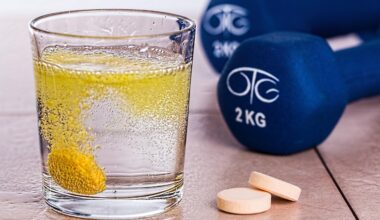How to Measure and Improve Your Football Speed and Agility
Measuring your speed and agility in football requires specific tests to evaluate your performance accurately. These assessments can help identify strengths and areas for improvement. Common tests include the 40-yard dash, 5-10-5 shuttle run, and T-drill. The 40-yard dash focuses on sprinting speed, while the shuttle run assesses quick directional changes. To properly measure your speed, find a flat, clear track or field and use a stopwatch or timing gate for precise results. Make sure to record your times and compare them to standard benchmarks for your age and position.
Improving speed and agility involves a combination of specific drills and strength training. Plyometric exercises such as box jumps and lateral bounds can effectively enhance your explosive power. Additionally, agility ladder drills and cone drills can improve footwork and coordination. Incorporating sprinting drills into your routine will also help boost speed. Ensure to focus on your running technique, as proper form can significantly impact your overall performance. Work on your arm drive, posture, and leg mechanics during sprint exercises. Consistency and progressive overload in your training program will lead to gradual improvements in times.
Importance of Footwork and Coordination
Footwork is crucial in football, as it directly influences your ability to change directions quickly and maintain balance during play. Strong footwork can make the difference between successfully evading a tackle or getting caught. To develop better footwork, practice drills that promote specific movements like quick lateral shuffles and explosive forward sprints. Incorporating plyometrics into your training is also beneficial, as they help in building the necessary muscle fibers for speed. Additionally, coordination drills using cycles, hurdles, or agility balls can refine your reaction times and overall efficiency on the field.
Alongside drills, strength training plays an essential role in enhancing speed and agility. Building strength in your lower body, particularly in the quadriceps, hamstrings, and calves, provides the foundation for explosive movements. Compound exercises such as squats, lunges, and deadlifts should be staples in your routine. These exercises improve functional strength and work various muscles simultaneously. Core strength is also vital for maintaining stability and power during sprinting. Include exercises like planks, medicine ball workouts, and Russian twists to develop a strong core. Consistently challenging your muscles will yield significant results.
Nutrition and Recovery
A balanced diet is crucial for athletes seeking to improve speed and agility. Consuming the right mix of carbohydrates, proteins, and fats enhances performance and facilitates recovery. Prioritize complex carbohydrates to fuel your workouts, lean proteins for muscle repair, and healthy fats for overall health. Stay well-hydrated before, during, and after training. Don’t underestimate the importance of recovery time; your body needs it to rebuild and grow stronger. Incorporate rest days into your training regimen, and prioritize sleep to maximize your athletic capabilities.
Mental focus is another component of improving speed and agility in football. Visualization techniques can be highly effective, where you mentally rehearse drill movements and game scenarios. Developing a competitive mindset can also enhance performance on the field. Set specific goals for your speed and agility metrics, and track your progress regularly. Consider working with a coach or trainer who can provide feedback and keep you accountable. The combination of physical training and mental preparedness will ensure that you are always maximizing your potential during practices and games.
Tracking Your Progress
Regularly tracking your performance metrics is essential for athletes aiming to measure their progress. By documenting your times for various drills, you’ll gain insights into your improvements and determine areas that require further focus. Use a training journal or apps designed to monitor speed and agility metrics. Include notes about training frequency, types of drills performed, and any changes in diet to correlate improvements. It’s also beneficial to engage in timed competitions or scrimmages to simulate game environments and assess your real-world performance under pressure.
In conclusion, improving your football speed and agility requires a multi-faceted approach, incorporating drills, strength training, nutrition, and mental preparation. Commit to a structured program, monitor your progress, and adjust your routines as necessary. With the right mindset and consistent training, you can see significant enhancements in your performance. Remember, the goal is not just to be faster but to be more agile and effective in your movements during games. Dedication and effort in every aspect will lead you to success on the field.


